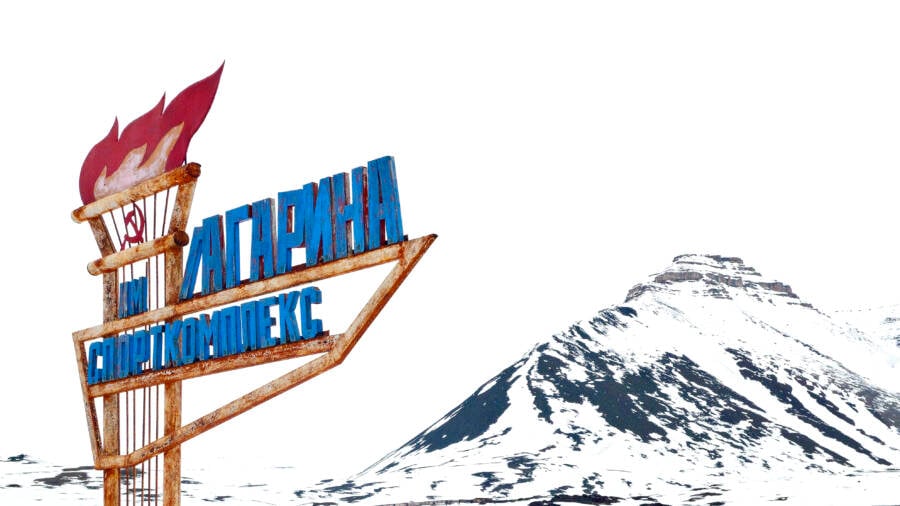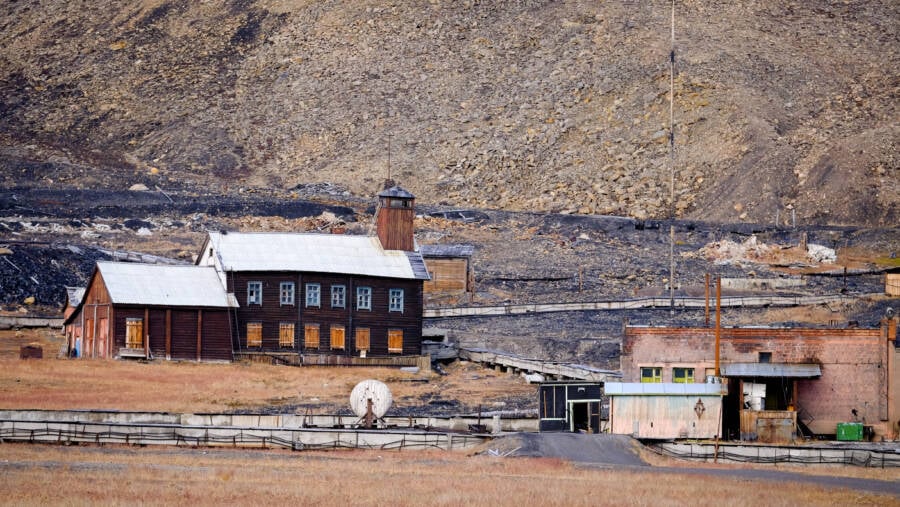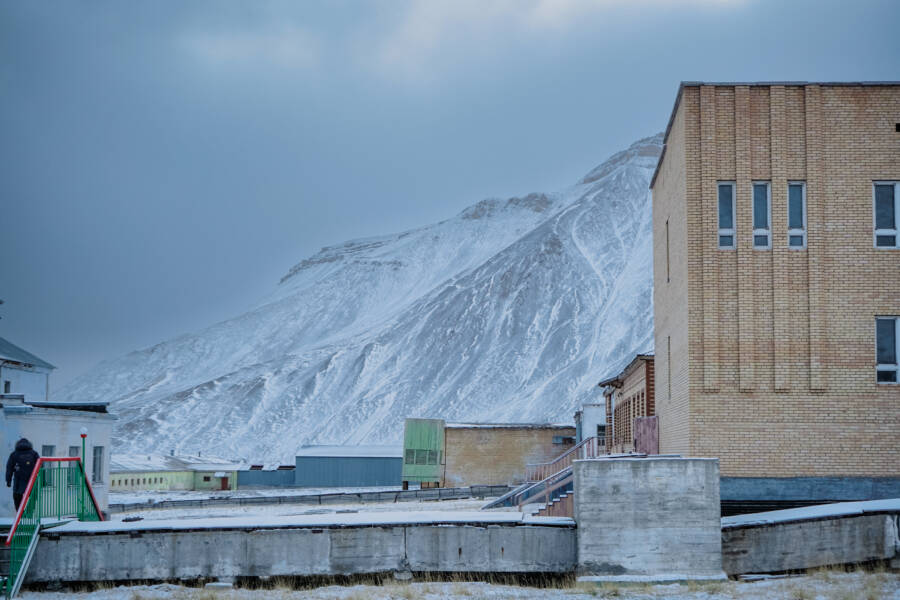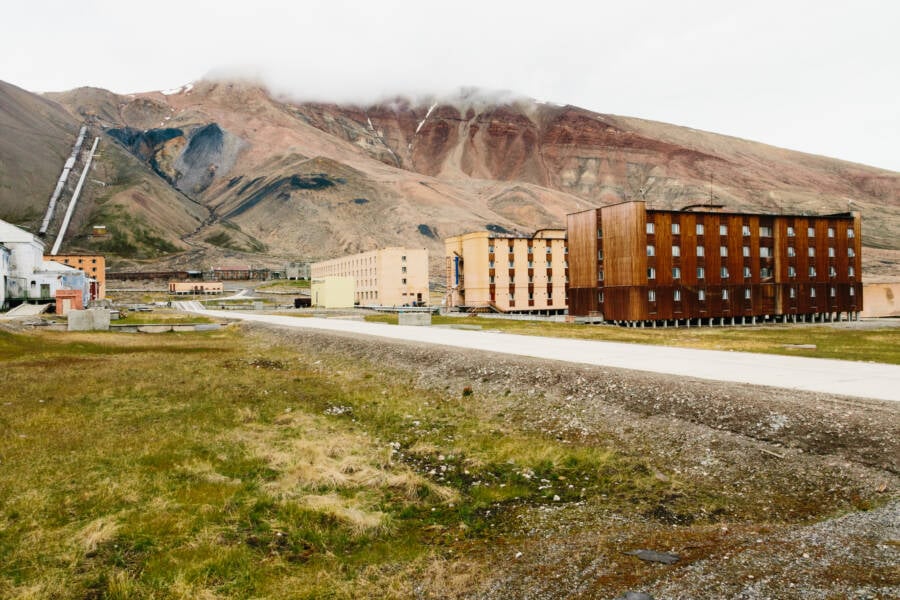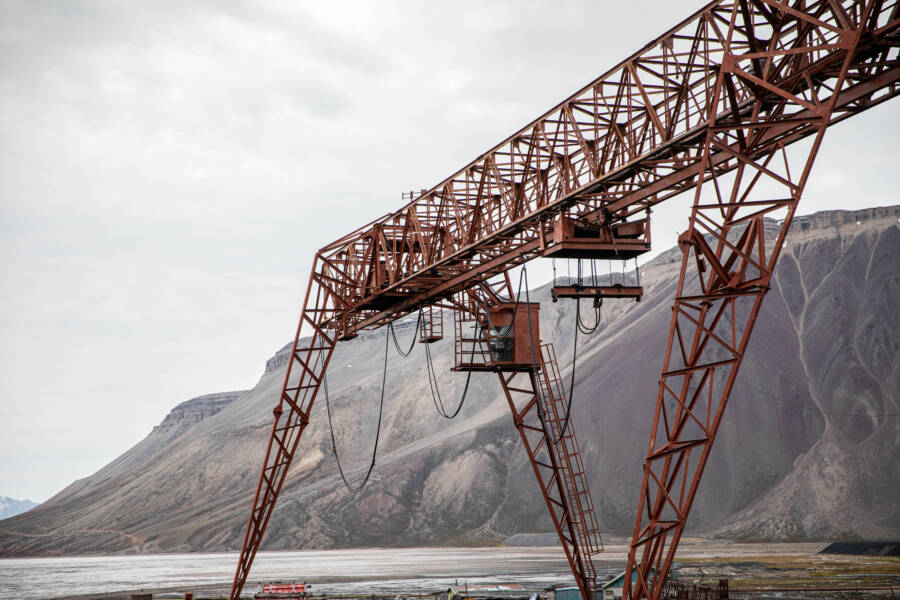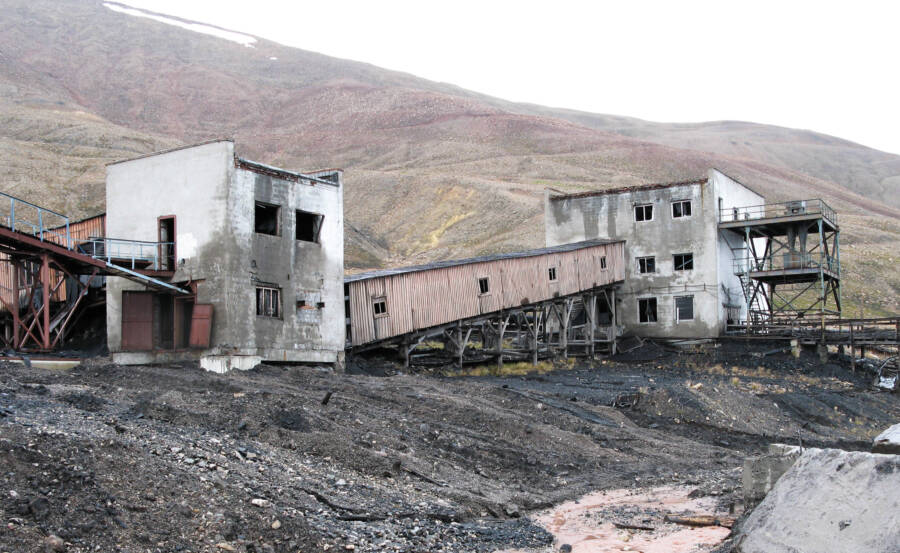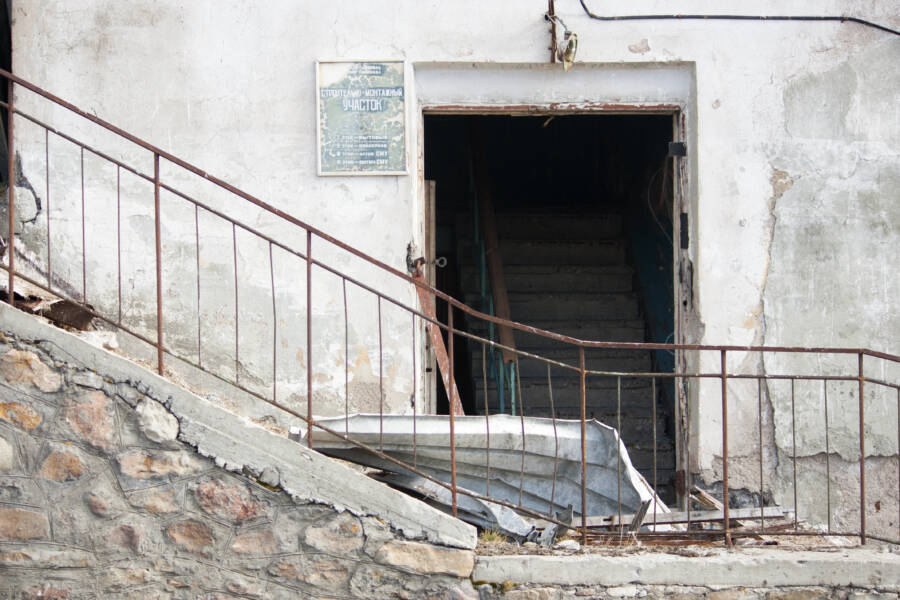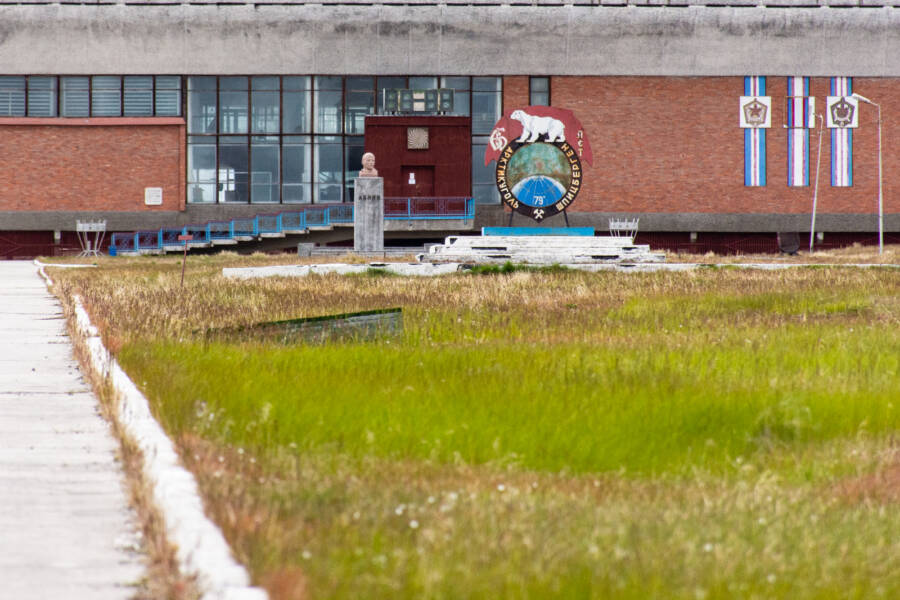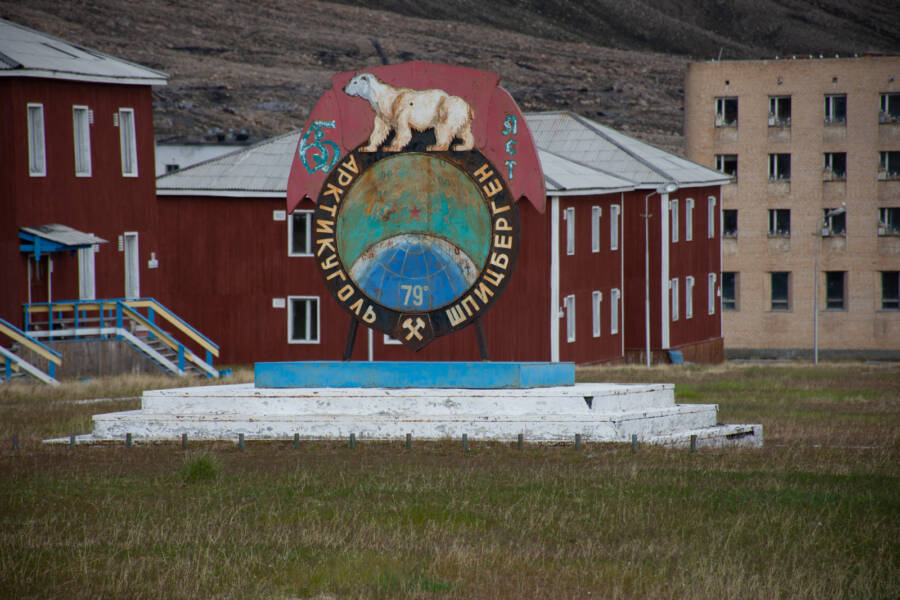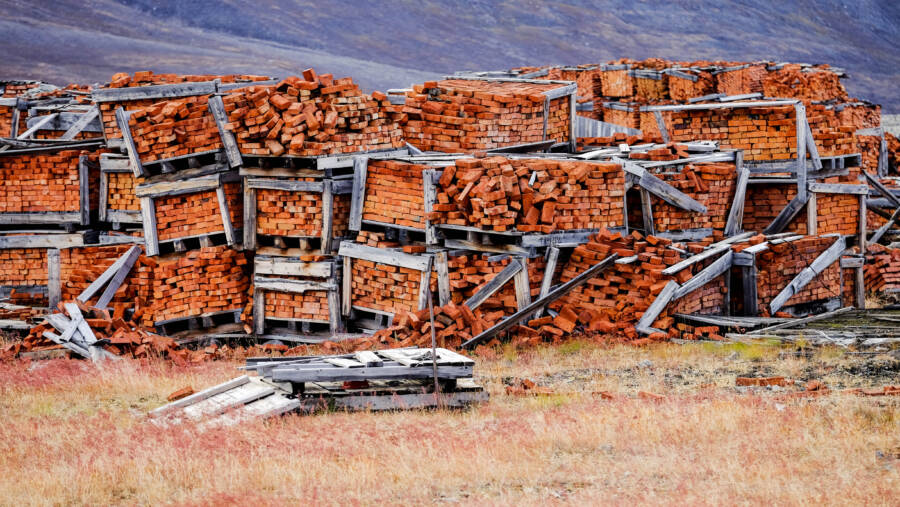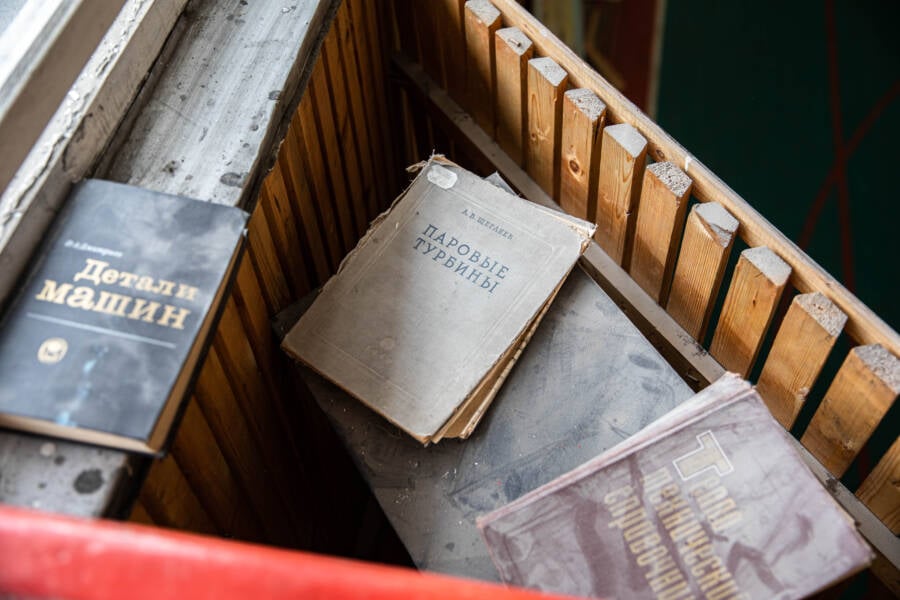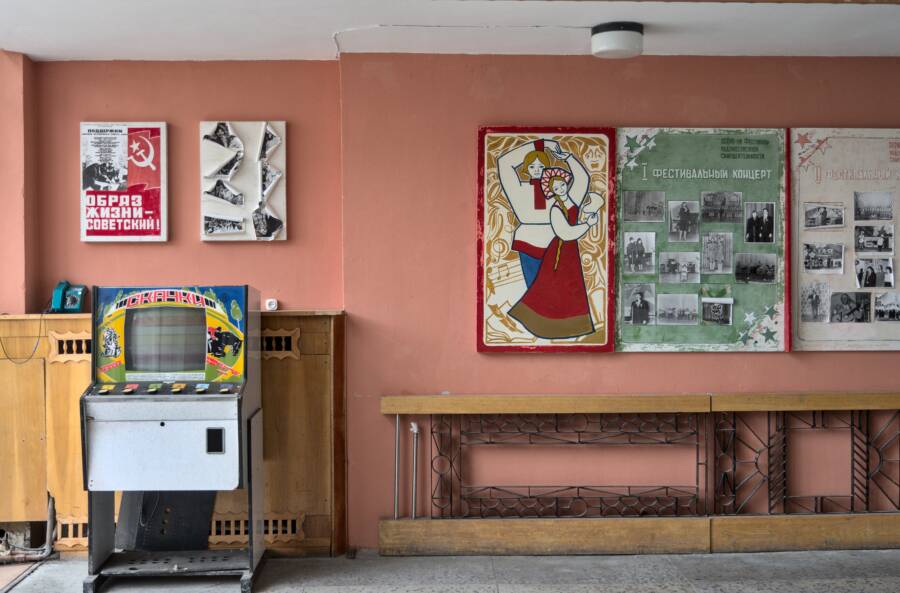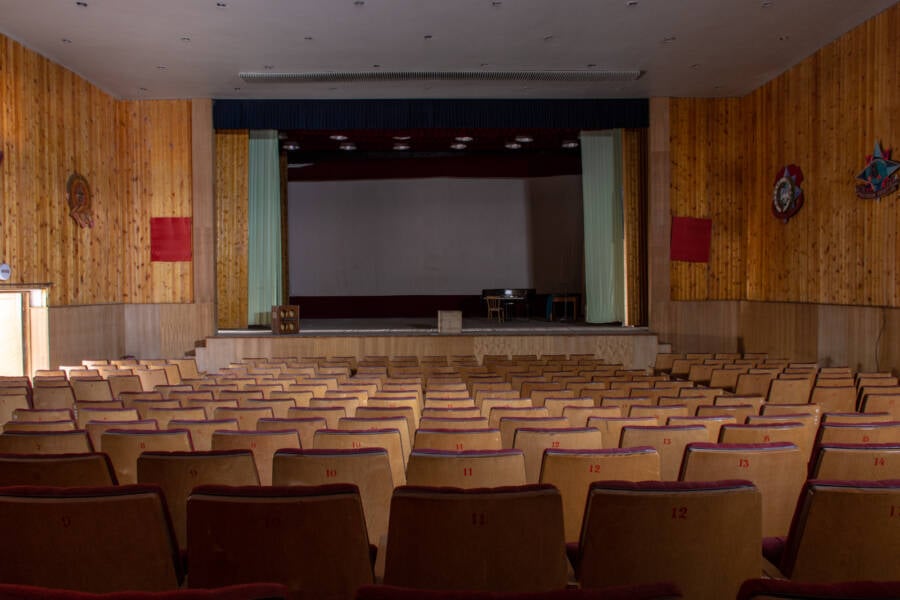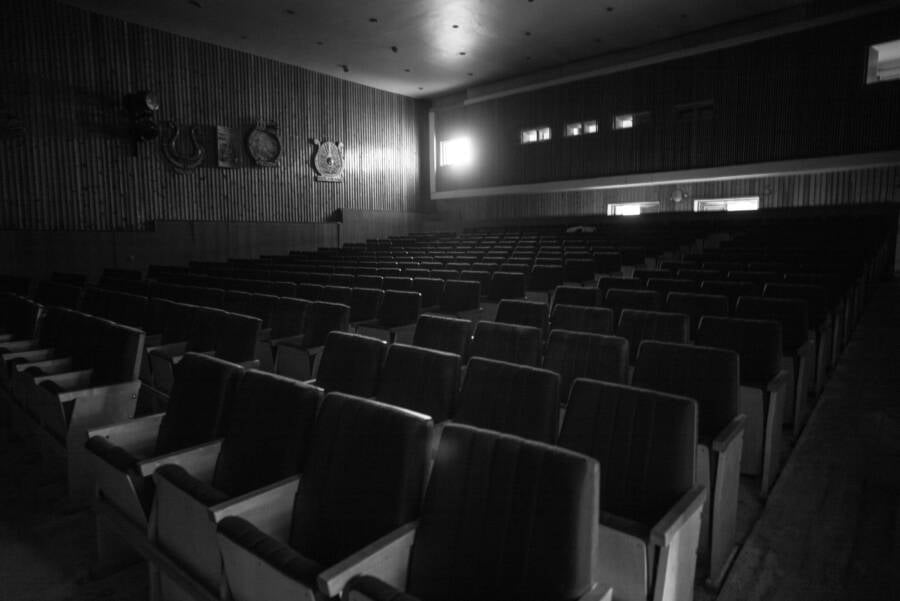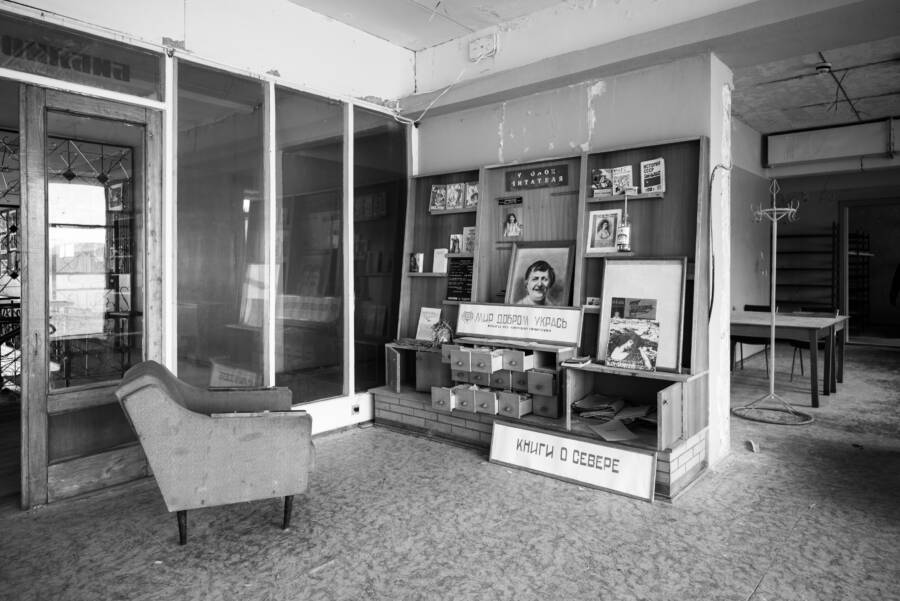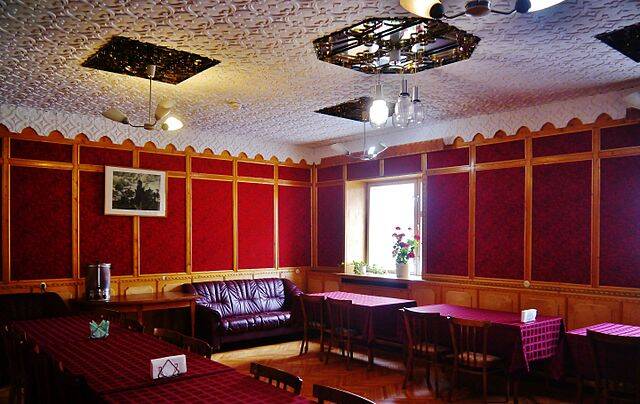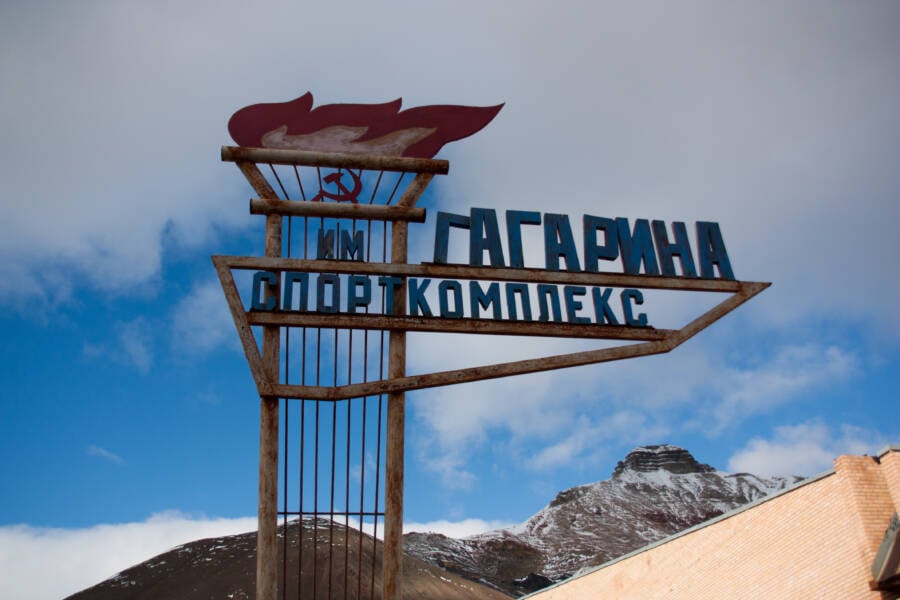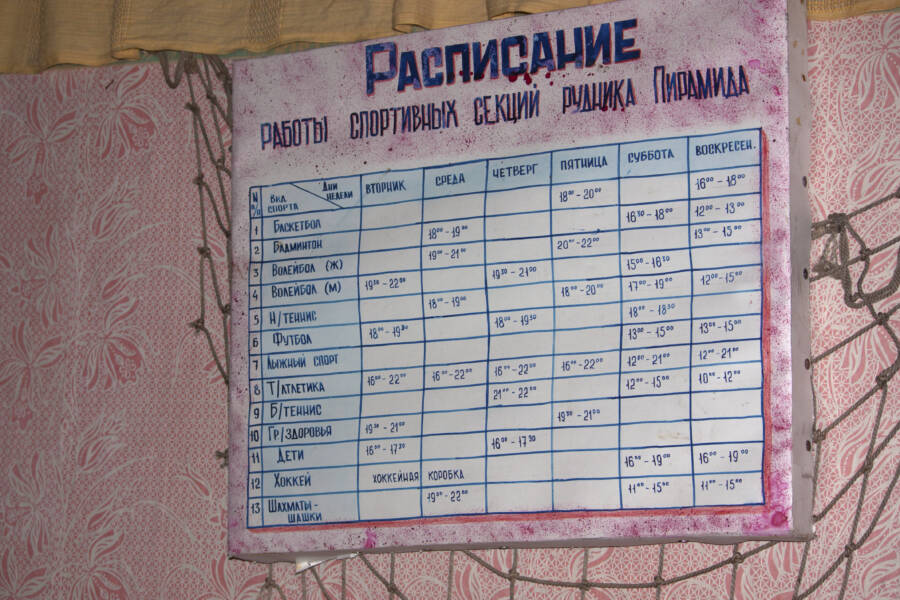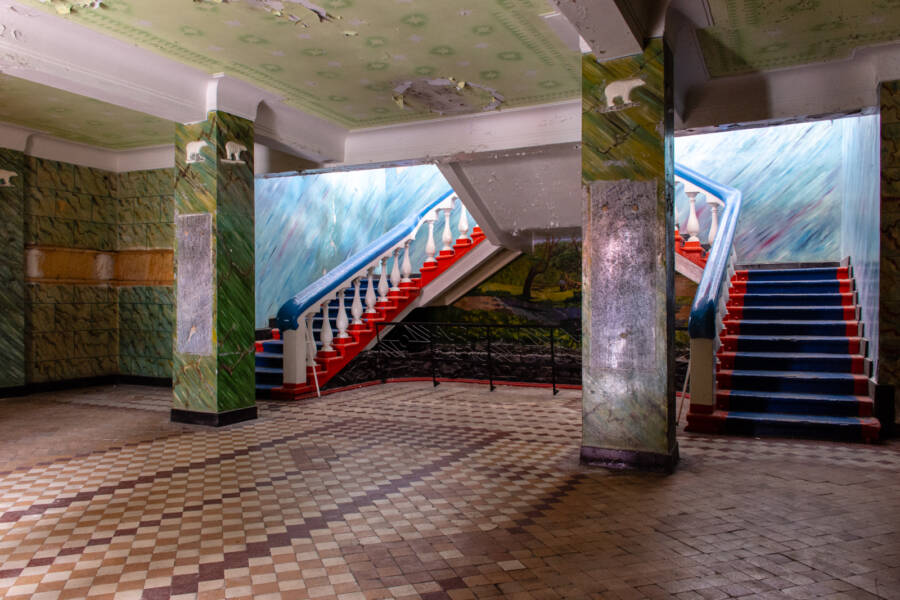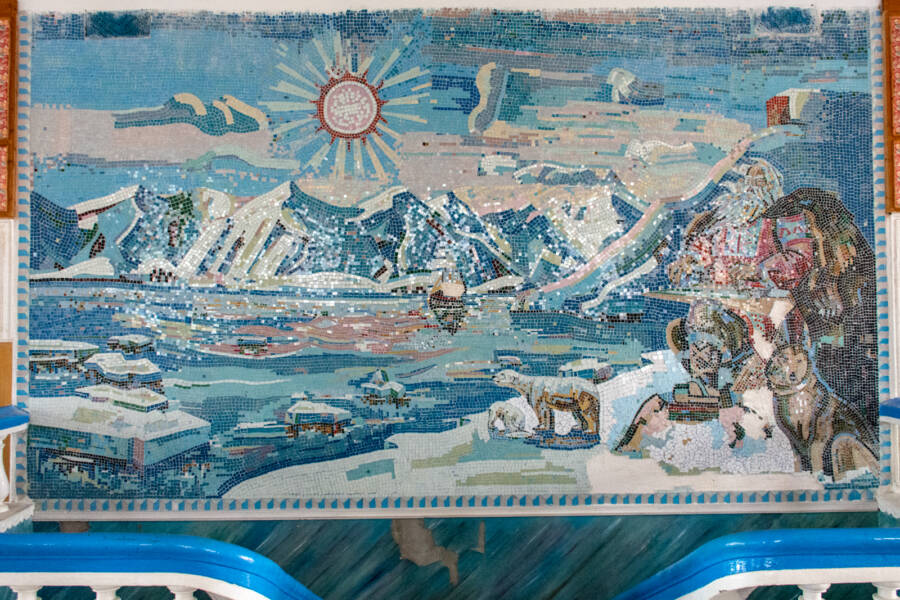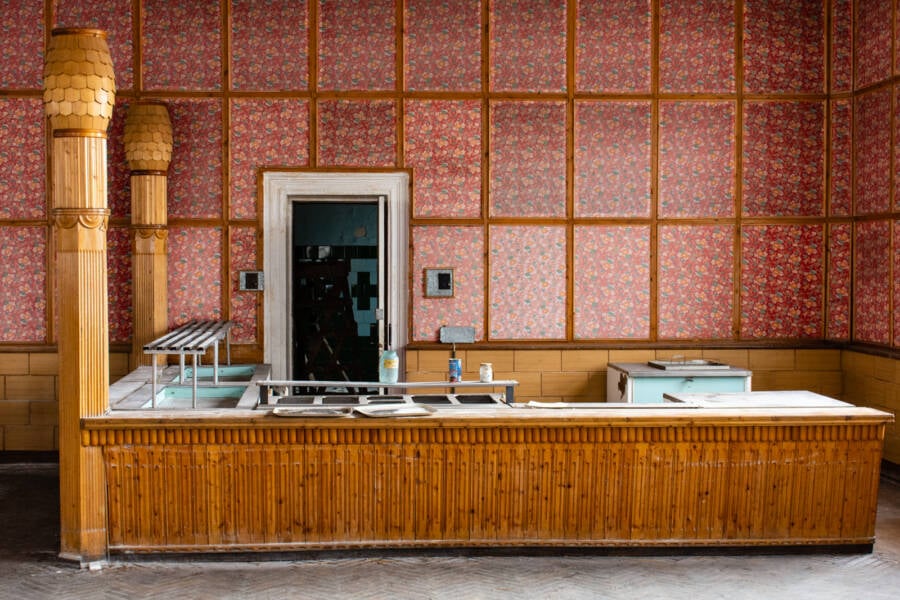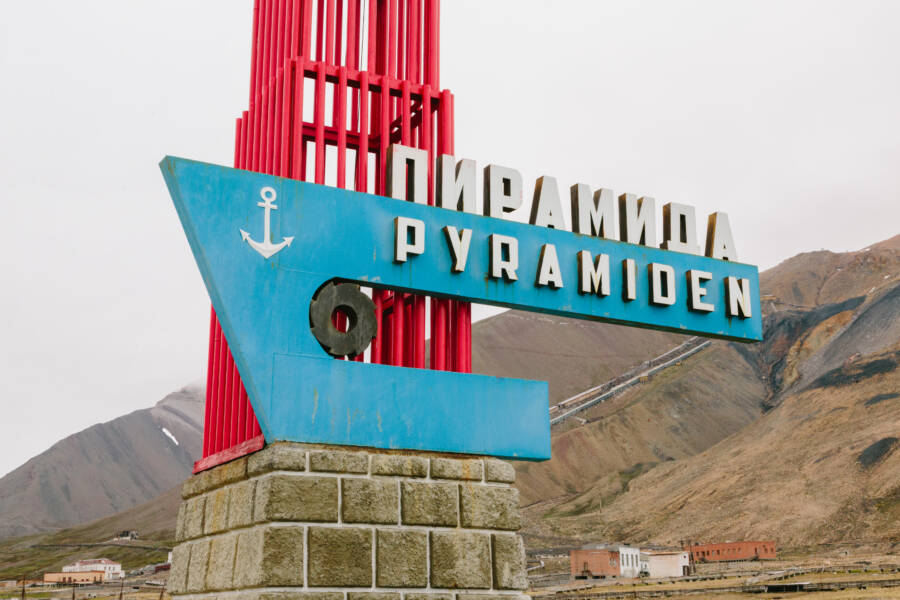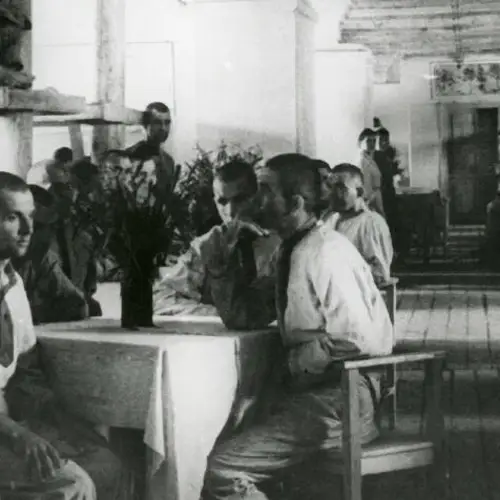For decades, the town of Pyramiden on the Norwegian archipelago of Svalbard was considered a model of Soviet society — until a tragic accident prompted its residents to abandon this former utopia, leaving it frozen in time.

Jussi Toivanen/FlickrAbandoned Soviet buildings in Pyramiden.
On a remote Norwegian island inside the Arctic Circle lies Pyramiden, an abandoned coal mining town that once employed hundreds of men from the Soviet Union.
In its heyday during the Cold War, this settlement was home to over 1,000 people trying to make an honest living in one of the most inhospitable environments on Earth. Former residents state that the town was the pinnacle of Soviet living, boasting a range of amenities like an indoor pool, a movie theater, and an ornate cafeteria.
For decades, Pyramiden functioned as a sort of Soviet utopia — until a fatal plane crash and a series of economic troubles prompted its residents to abruptly desert it, leaving it frozen in time.
Today, the town is largely abandoned except for the handful of caretakers and guides who operate this living museum in the summer months — as well as the foxes, polar bears, and other wildlife that roam its ruins.
Explore the ghost town of Pyramiden for yourself in this haunting gallery.
The Creation Of An Arctic Mining Town
The remote Arctic archipelago of Svalbard sits over 500 miles north of continental Norway and about 400 miles south of the North Pole. The islands may have been home to Vikings as early as the 12th century C.E. However, the first recorded visitation to the islands was by a Dutch mariner in the 16th century.
After this "discovery," Svalbard became a well-known stopping place for traders, trappers, and hunters. By the 20th century, a number of countries also began eyeing it as a potentially valuable coal mining site.
In 1920, the Svalbard Treaty gave Norway sovereignty over the islands; but it also granted mining rights to its signatories, including the Soviet Union. A few years later, in 1927, the Soviet Union purchased the Svalbard town of Pyramiden, named after the pyramid-shaped mountain looming over the town.
The Soviet coal company Trust Arktikugol began constructing coal mines near the settlement, sending over both Russian and Ukrainian miners to work there. By the 1950s, the town had blossomed from a desolate Arctic wasteland into an idealized model of Soviet culture.
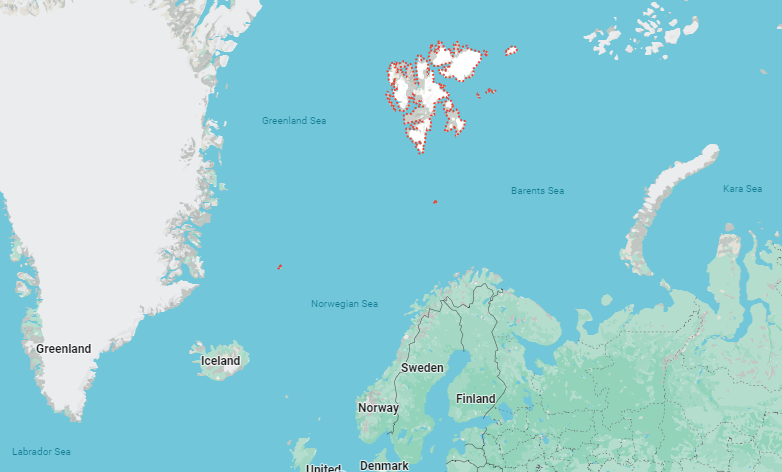
Google MapsSvalbard, Norway, outlined in red.
A Utopian Life In The Arctic
In order to accommodate the hundreds of miners flooding the town, as well as their families, the USSR allocated a considerable amount of money to develop Pyramiden.
The town built dozens of state-of-the-art Soviet-style structures, including a hospital, a recreation center, greenhouses, a cemetery, a cafeteria, and a beloved drinking spot made of thousands of bottles called the "Bottle House."
There were also assigned residence halls, each with its own nickname. "London" was the unmarried men's hall. "Paris" was for unmarried women. The "Hotel" was where short-term workers stayed, and "Crazy House" was for families with young children.
At the center of town life was a large recreation center called the Cultural Palace, which housed a basketball court, a heated swimming pool, a music hall, a movie theater, and a library. Over the course of the town's history, boats and planes transported hundreds of Soviet films to the island, many of which still remain there today.
"The kids from [the nearby town of] Longyearbyen used to go there to use the swimming pool," Steve Coulson, an Arctic ecologist at the University Center in Svalbard, told Smithsonian in 2014. "It was quite impressive in its day."
Needless to say, working at Pyramiden was highly desirable. Individuals who were lucky enough to find work there often found themselves enjoying a quality of life that was better than what they'd experience back home.

Delphinidaesy/FlickrAn empty swimming pool at Pyramiden.
"It was meant to be an ideal Soviet society," Coulson said. "It was a town where any foreigner could come without a visa, so it served as an exhibition of the best of the Soviet Union."
A Deadly Crash Spells The End For Pyramiden
For nearly 70 years, the residents of Pyramiden enjoyed all the luxuries the city had to offer — until one tragic incident dealt a devastating blow to the community.
On Aug. 29, 1996, a plane chartered by Trust Arktikugol departed Moscow and made its way to the Svalbard islands. Most of the passengers were Pyramiden residents.
The flight took off successfully and began preparing its descent into Svalbard, but a critical communication error sealed the plane's fate.
According to Life In Norway, the plane's crew spoke with air traffic control ahead of landing, but failed to communicate clearly because they spoke very little English. Consequently, they inadvertently steered the plane off course — and into the mountain Operafjellet.
The crash killed all 141 passengers and crew members on board. And for a town as small as Pyramiden, the impact was enormous.
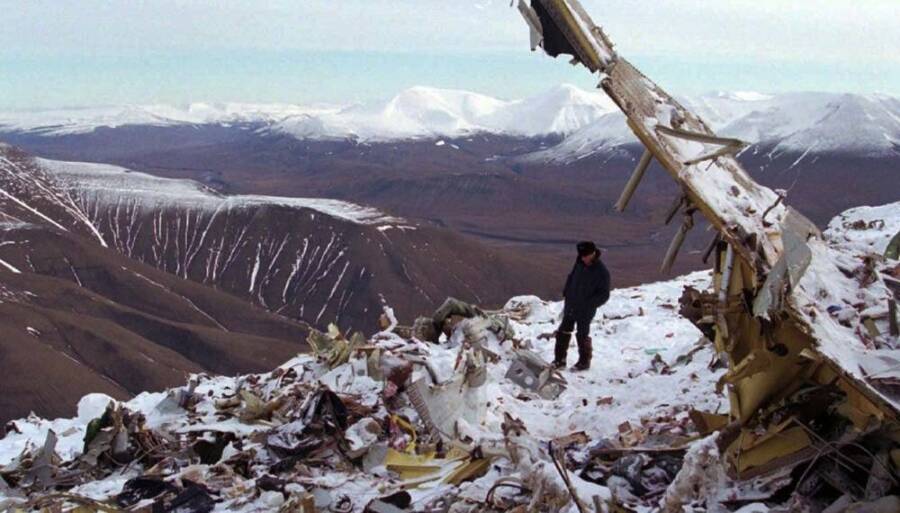
Governor of SvalbardThe wreckage of Vnukovo Airlines flight 2801, which killed all 141 passengers.
The community never quite recovered from the tragedy. No longer was Pyramiden a beacon of idealized Soviet living. Instead, a feeling of dread and grief permeated every room that once echoed with laughter as the residents mourned the loss of their neighbors and family members.
The Town Shuts Down
As if the plane crash weren't enough, economic troubles further degraded the community's morale.
"The crash led to a great depression in the company and workforce," said Vadim Prudnikov, a professor at the University of Ufa, Russia who once worked as a guide at Pyramiden. "It contributed to the decision to close down one of the settlements."
Coal mining in Pyramiden was producing abysmal profits. Meanwhile, miners' wages had begun to falter, and Russia was no longer subsidizing the town's development. Hein Bjerck, an archeologist at the Norwegian University of Science and Technology, told Smithsonian that low profits contributed to Pyramiden's abandonment.
"They explained in these meetings that I was a part of back in '97 that, in order to continue mining, they would have to make big investments to get to new coal layers that were deeper in the mountain," Bjerck said. "But the whole economy — and the Russian government — was much more unstable, and they didn't want to make the investment."
Eventually, Trust Arktikugol decided to shut down Pyramiden's coal mining operation. Less than two years after the plane crash, the last shipment of coal left the town, along with its remaining residents.
By October 1998, Pyramiden had become a ghost town.
The Town Of Pyramiden Today

Bjoertvedt/ Wikimedia CommonsThe ghost town of Pyramiden is now an open-air museum.
Today, Pyramiden's ruins sit frozen in time, a relic of a bygone era.
Nature has slowly reclaimed the town, with mold growing on the walls of former residences, local birds making nests in windowsills, and polar bears and other arctic animals occasionally roaming the grounds.
Pyramiden is also home to a few caretakers and guides who operate this "living museum" during the warmer summer months. Today, thousands of tourists flock to its eerie confines each year to get a taste of what life was like inside this mysterious Soviet utopia.
The town's hotel has been refurbished for guests to stay in during their visit. However, there are no plans to renovate and revitalize the rest of the settlement. Instead, the town will remain a haunting testament to a different time.
"Sometimes it seems as if life was simpler back then," Olga Kuznetsova, who lived in Pyramiden as a child, told the BBC. "But the mind can play tricks. It was a hard life here. Now Pyramiden is like a house haunted by ghosts and that makes me sad. But for all that, I love it here. It is a special place. It gets under your skin. Once that happens, it is very difficult to leave."
After reading about the town of Pyramiden, discover 44 photos of the most eerie abandoned homes. Then, dive into the story of Centralia, Pennsylvania, the abandoned mining town that inspired the video game Silent Hill.
